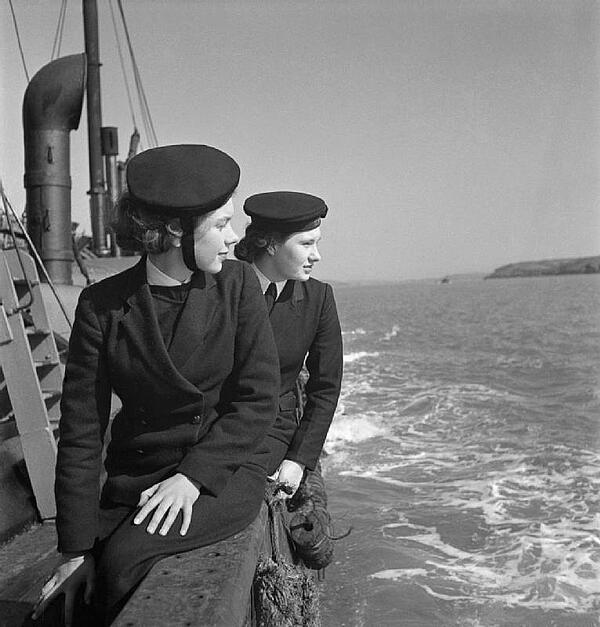Women's Royal Naval Service
The Women's Royal Naval Service (WRNS) was first founded in 1917 during World War One. It was disbanded at the end of the war but reformed in 1939 when war seemed imminent. There were only a limited number of places available for women so places were usually given to people with a famiiy contact. The Director of the WRNS was Vera Laughton Mathews. Those who volunteered in the WRNS were nicknamed ‘Wrens’.
In December 1941 the government passed the National Service Act which allowed the conscription of women into war work or the armed forces. Women could choose to join the WRNS or its naval or air force equivalents, the ATS and the WAAF.
At the start of the war, work in the WRNS was limited to clerical, driving and domestic work. Recruitment posters for the WRNS clearly stated that the role of the WRNS was ‘to free a man for the fleet”.

Many Wrens carried out ‘domestic’ jobs such as cooking, stewarding, and cleaning, but over time their responsibilities expanded. In fact, some naval air stations had all-female anti-aircraft gun teams and others worked as motorcycle dispatch riders.
By 1941 the shortage of manpower increased the variety of work carried out by the Wrens. They were now able to work in harbours on small vessels, although they were still prohibited from going into open water. Although the majority of Wrens served in Britain, some were posted overseas in Singapore.
At its peak in 1944, the Women’s Royal Navy Service had 74,000 serving members. 100,000 women joined in total and 303 were killed in total.
Some Wrens also worked at Bletchley Park where they worked with the Enigma code-breakers. Wrens with language skills were also drafted to stations around the coast to intercept and translate enemy signals.
Like in the WAAFs, women in the WRNS were initially met with derisory comments from men who were sceptical of their role. However, once their importance became clear such hostility eased.
See also: Auxiliary Territorial Service
MLA Citation/Reference
"Women's Royal Naval Service". HistoryLearning.com. 2026. Web.
